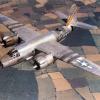TFR Interpretation
-
Members Online
- Ragsf15e
- Beechbum
- jeremyc209
- Sinclair51
- Thedude
- SoccerCA
- Parker_Woodruff
- varlajo
- 1980Mooney
- mmcdaniel33
- TheMooneyAnomaly
- TaildraggerPilot
- Rwsavory
- Scottknoll
- Jason 1996 MSE
- 303mooney
- LANCECASPER
- Brian Simmons
- MikeOH
- Irek
- AndreiC
- Hank
- EricJ
- Niko182
- Wingover
- Scott Ashton
- Fly Boomer
- Air pirate
- spaceman39a
- Phil EF


Recommended Posts
Join the conversation
You can post now and register later. If you have an account, sign in now to post with your account.